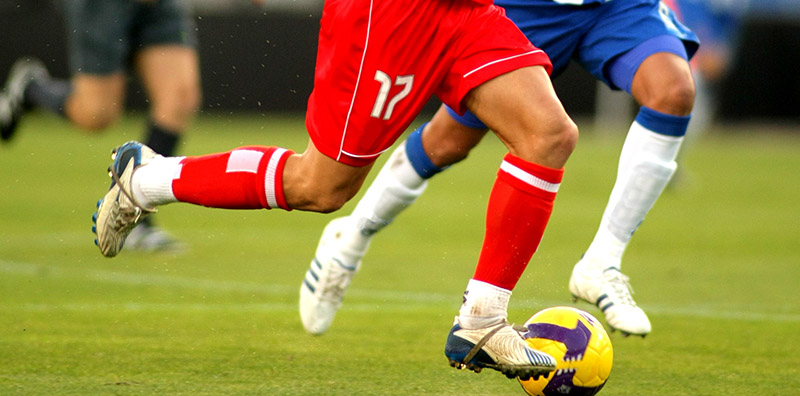Sports Injury – Professional Physio – Sydney City CBD
Whether you are an elite athlete or participate in sports as a hobby, the sports physiotherapists at Macquarie Street Physiotherapy are experienced in treating each injury according to your particular needs and circumstances.
We help to minimise pain, discomfort and immobility in both the short- and long-term, and give expert advice and exercises to help minimise the potential for future re-injury of the treated area. Even after the initial injury has healed, we can help educate you on what to do to strengthen the injured area and give preventative measures.
At Macquarie Street Physiotherapy we specialise in sports physiotherapy and we look forward to helping you get active again. Work in the Sydney CBD call us on (02) 9221 1604 to make an appointment.

WHAT IS THE DIFFERENCE BETWEEN ACUTE AND CHRONIC SPORTS INJURY?
At Macquarie Street Physiotherapy, your local city sports physiotherapy centre we see a wide range of sports injuries sustained by either competitive or recreational athletes. There are essentially two groups of sports injuries – acute and chronic. We see equal numbers of both. An injury which occurs suddenly, such as a sprained ankle or knee caused by an awkward landing is known as an acute injury. A chronic injury is one that has been with you over time due to over-load fatigue, structural abnormalities, poor biomechanics or technique. An untreated acute injury may become a chronic injury if it is not adequately managed.
WHAT IS A TRAUMATIC SPORTS INJURY?
Trauma implies “something happened” – it was likely sudden and very painful, and you may not have been able to play on.
Examples include:
Ligament sprains – ACL or PCL (cruciate ligaments of the knee) or MCL (medial collateral ligament of the knee) injuries or ankle sprains.
Muscle strains – such as a quadriceps (thigh), hamstring or rotator cuff (shoulder) tear.
Impact injuries – such as a corked thigh, bruise or contusion which cause bleeding within the tissues, or into a joint.
WHAT ARE EXAMPLES OF OVER-USE SPORTS INJURY?
Overuse injuries occur over time, developing slowly or quickly. At first you might play on despite the pain, and it might even reduce once you are warmed up. However it is likely to come back and bite you when you wake up the next day! Each time you play, it worsens, or certainly doesn’t get any better.
Examples include:
Tendinitis – such as Achilles tendinitis, “jumpers knee” (tendinitis of the patella tendon), deQuirvain’s Syndrome (wrist), tennis elbow, ITB friction syndrome and many others.
Bursitis – such as trochanteric (hip) or sub-acromial (shoulder) bursitis
Stress fractures – this is when minute cracks form in bone as a result of repeated force (eg., March fracture of the foot)
DO YOUNGER ATHLETES SUFFER DIFFERENT SPORT INJURIES TO ADULTS?
Adolescent athletes do suffer certain injuries due to their lack of skeletal maturity despite often quite a heavy training schedule. Overuse injuries in the adolescent include:
Osgood Schlatter’s disease – knee pain
Sever’s disease – heel pain
Sinding-Larsen-Johansson disease – knee pain
Mostly these injuries are managed with relative rest, but diagnosis is important.
Younger (primary school age) athletes are more likely to have injuries such as greenstick fractures and buckle fractures, which are specific to the developing skeleton.
Sportspeople in their 50s and 60s tend to suffer more tendinitis and muscle tears, along with joint issues, due to the reduction in elasticity of their tissues. Examples include rotator cuff tears of the shoulder and Achilles tendinitis at the heel.
DIAGNOSING AND MANAGING THE SPORTS INJURY
The way the injury was sustained as well as signs and symptoms all help your sports physiotherapist determine the type and extent of the injury. We will conduct a thorough assessment at your initial appointment. You may need treatment only, or further tests such as x-rays may be warranted. Your physiotherapist will guide you with regards to the best course of action. We will create a management plan to assist your recovery from injury and also work towards preventing recurrence.
WHAT SORT OF SPORT PHYSIOTHERAPY TREATMENT IS APPROPRIATE?
Treatment may include therapeutic ultrasound, massage, dry needling, stretches, taping or bandaging, and specific exercises. The exercises may be for strength, co-ordination, balance and possibly core exercises. Advice as to what to do at home and work, along with just how much activity is likely to be safe, are crucial to the success of your treatment.
MOVING FORWARD: REDUCING THE RISK OF SPORTS INJURY
Try not to do too much, too quickly: Many injuries can be avoided if you are conservative with progressing your exercise. Don’t try to cram for an event or tournament, or even for the purpose of losing weight.
Body alignment or technique: ask your physio to show you techniques to avoid injury
Warm up before playing: don’t launch into sport cold and stiff
Allow adequate recovery time between sessions: your body needs to repair between work-outs
Wear appropriate footwear: correct footwear provides protection from the ground up
Wear safety equipment appropriate to the sport: protect yourself from injury with safety equipment such as a helmet or mouthguard
Cross train: exercise in a variety of ways so you can use your body and muscles in different ways. For example, go to the gym to help support your body for tennis.








